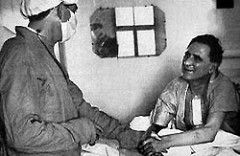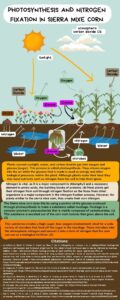“Life to me is so very valuable that I doubt if a minimum time limit can be set on it.” –Christiaan Barnaard1
What does the beat of your heart sound like? It sounds pretty much like any other heart, right? What if this heart was not your own? What if this heart had belonged to someone else before you? The sound isn’t so ordinary anymore now is it?

On December 2, 1967, twenty-five year old Denise Darvall and her mother were crossing the street trying to get to a well-known bakery. The mother and daughter were making their way to the car with the pastry in hand when the unthinkable happened. A drunk driver, paying no attention to his surroundings and running a red light, sped through the crosswalk, taking out the two ladies in his path. Denise’s mother was killed on impact, and upon arrival at the hospital, Denise would be declared brain dead.2 Her father made the decision on her behalf to save the life of another individual and give someone else another chance to live. Denise and her mother fell victim to this reckless act and ultimately lost their lives. Denise had now past away, but her death would not be in vain. Though she may not have known, Denise would become a part of medical science history.
Dr. Christiaan Barnard was born in the year 1922, and received his education at the University of Cape Town in 1946. After receiving the training necessary to become a surgeon, Christiaan helped develop an open-heart surgery program at the hospital where he worked, Grute Schuur Hospital.3 He had also had help from Stanford University to perfect his surgical techniques.4 Christiaan Barnard had numerous accomplishments under his belt already, but there was still some work that had to be done. Dr. Barnard wanted to change the world and do the unthinkable. With patients Louis Washanky and Denise Darvall, he’d be able to do just that.

Fifty-three year old Louis Washanky was a grocer in the city of Cape Town, who had been afflicted with serious heart problems. He was quite the odd choice to be the first patient for this procedure, considering he had a history of smoking and he was also diabetic.5 Additionally, he had a massive growth on his leg that would require draining and would also be another location where infection would take place. Louis was far from being the ideal choice for a first heart transplant recipient, but nonetheless, Dr. Barnard saw something in Louis and knew that he was to be the one who would receive the new heart and get a second chance at life. Denise had been declared brain dead, but she had also been deemed an ideal donor for the impending surgery for Louis. Therefore, since she was seen as selected donor, her organs could not be allowed to become deoxygenated. So her body temperature was regulated and she was kept on a ventilator so that oxygen would still be provided to her organs to keep them functioning. Denise had the blood type O and Louis had the blood type A. This meant that Denise was viewed as a “universal” blood donor and therefore Louis could receive her blood.6 However, just because the blood types were compatible did not mean that their white blood cell types were compatible. Due to the time sensitive procedure, there was no time to determine whether Louis’s body would reject the new organ. The doctors could only move forward with the procedure and hope for the best. Louis was in the room right next to Denise’s, and once the okay was given, the historic surgery was ready to begin.
Shortly after two in the morning on December 3, 1967, the surgery was ready to take place. Denise’s body had been properly prepped for the procedure and Louis had been anesthetized. Denise’s heart had been clamped and was ready for removal and Louis’s heart had been clamped so that all the blood in his body was being directed everywhere except to his now failing heart. Once Denise’s heart was removed, it was directly put on ice and was being pumped with blood so as to keep the organ alive, whereas Louis’s heart was to never beat again. The surgeons carefully moved the donor heart into its new home and stitched the organ in like a puzzle piece. They carefully attached the aorta, the pulmonary artery, and each and every vein. The delicate procedure took an estimated four hours to complete. The moment of truth would come when it was time for the heart to beat for the first time. All hands were off the body and Dr. Barnard would shock Louis’s chest to see if the risky surgery was too good to be true. Dr. Barnard shocked Louis’s chest, and sure enough…lub-DUB, the heart began beating on its now.7

Louis had survived the surgery and he now had a properly functioning heart, but he wasn’t out of the woods yet. He had won half the battle, but their still were no guarantees as far as Louis’s outcome would go. Now the hurdle that had to be crossed was to see if Louis would continue to survive and see if his body would handle the sudden, drastic change of a new organ. Upon Louis’s first time waking up, he appeared to be doing fine and feeling good. He was smiling and was very grateful for the second chance at life that he had been given. Dr. Barnard was overjoyed to see his first patient doing so well, but he knew that there was still a long way to go. In the coming days, Louis had seemed to be making progress and continuing to heal more each day. About two weeks after the surgery, however, Louis had taken a turn for the worse. His caretakers were uncertain as to what caused the sudden decline in health. They deemed the issue to be attributed to their worst fear: organ rejection. The caretakers decided to increase the treatment for organ rejection, which ultimately would cause Louis to become more immuno-compromised. This means that his immune system would be lowered to the point where his body could no longer fight off infection or defend itself from any potential invaders of his body. While the intentions of this action were for the benefit of Louis, the step taken to help him actually ended up being detrimental to his health. The increase of medication actually worsened his condition rather than help it. Due to his compromised immune system, Louis continued to deteriorate and he ended up contracting pneumonia, from which he unfortunately could not recover. A little over two weeks after receiving his new heart, Louis Washanky passed away due to the complications following his surgery, combined with the deadly pneumonia.8
Though Louis unfortunately passed away, his operation was still considered a success. The procedure was something that had never been done before and Dr. Barnard’s patient lived for over two weeks with the new heart. The operation would set the stage for future heart transplants to take place with even more of a success rate. From Louis’s surgery and post-op conditions, healthcare providers could learn from the operation both what went right and what went wrong. That way they could provide the best outcome possible for their patients. Dr. Barnard took a chance with this new procedure, but he opened the doors for future surgeons and patients alike to have this second chance like Louis Washanky had been given. Dr. Barnard took a chance on the procedure, and by doing so, he also helped other surgeons have the bravery to take a chance on new, life-saving surgeries as well. Of course, Denise Darvall cannot be forgotten in all of this. Though what happened to her was tragic, she helped to give Louis Washanky another two and a half weeks of life that he may not have had without her help. Her contribution can never be forgotten since the breakthrough surgery would not have been possible without her. Denise quite literally gave the most loving gift of life to Louis Washanky straight from the heart. Although bittersweet, due to the story of these three individuals and all others involved, the history of medicine was changed, and medicine today has advanced due to the sacrifices and chances taken by these brave people.
- Christiaan Barnard, Heart Attack: You Don’t Have to Die (New York: Delacorte Press, 1971), 5. ↵
- James Brent-Styan, “PART 2: First Heart Transplant-‘Denise never saw the motor vehicle coming,’” news24. Accessed November 8, 2018. https://www.news24.com/Books/part-2-first-heart-transplant-denise-never-saw-the-motor-vehicle-coming-20171203. ↵
- John Brink and Johannis Hassoulas, “The first human heart transplant and further advances in cardiac transplantation at Groote Schuur Hospital and the University of Cape Town,” Cardiovascular Journal of Africa Vol. 20(1) (2009): 31-35. ↵
- “A Brief History of Heart Transplantation,” Columbia Doctors, accessed September 9, 2018. http://columbiasurgery.org/heart-transplant/brief-history-heart-transplantation. ↵
- John Brink and Johannis Hassoulas, “The first human heart transplant and further advances in cardiac transplantation at Groote Schuur Hospital and the University of Cape Town,” Cardiovascular Journal of Africa Vol. 20(1) (2009): 31-35. ↵
- Lily Rothman, “50 Years Ago This Week: Inside the First Heart Transplant,” Time, December 11, 2017. Accessed September 9, 2018. http://time.com/5050803/1967-heart-transplant/. ↵
- Lily Rothman, “50 Years Ago This Week: Inside the First Heart Transplant,” Time, December 11, 2017. Accessed September 9, 2018. http://time.com/5050803/1967-heart-transplant/. ↵
- John Brink and Johannis Hassoulas, “The first human heart transplant and further advances in cardiac transplantation at Groote Schuur Hospital and the University of Cape Town,” Cardiovascular Journal of Africa Vol. 20(1) (2009): 31-35. ↵



58 comments
Alexa Casares
I have never thought about who the first person to receive this life changing surgery for many or how it must have gone. Thank you for sharing this information in such a well-written article.
Andrick Ferrer
I randomly stumbled across this article but I am glad that I did. The thought of the first heart transplant never crossed my mind but to now know the story of it is incredible. I cannot imagine the courage it had to take from Dr. Barnard to tackle this challenge head-on. It is always nice to learn of important historical events that are not often heard of. Props to you Rebecca for choosing such a unique story and telling it in a great way.
Yuliana Vasquez
this was such a interesting article , to know that he was the first to preform this kind of surgery took some guts. He was able to start the journey of heart transplant, one that today can be done successful because the technique is getting better. Also knowing that something good came out of tragedy is also what makes this interesting.
Michael Thompson
This is a satisfying story. I mean it’s sad that Denise got killed, by a drunk driver no less. And it’s sad that Louis ended up dying not too long after. But the fact that this was the beginning to saving thousands of lives is really cool. It makes everything that happened seem better, and it really was a big staple in human history.
Gabriella Urrutia
This story was very nice to read. It is fascinating to think about how the actions of one surgeon has helped to advance medicine to where we are today. Even though it wasn’t completely successful, it still had a huge impact on medicine. They took a risk doing the procedure without knowing the outcome, but it was very beneficial. The woman who lost her life helped another person even if she didn’t know it.
Nicholas Robitille
This article was very fascinating to read. I had never known that the first heart transplant had been such a risky one, and am surprised that it was approved without much testing. That the surgery succeeded at all without having been attempted before was a miracle in and of itself. It is tragic that Ms. Darvall lost her life, but she helped make medical history and pave a path walked by many cardiatric surgeons today.
John Estrada
This article is inspiring and is wholesome to the faith in ourselves. To know that 50+ years ago, a woman who tragically lost her life, was able to use her death as the means to provide a better life outside her own (though being her father’s choice). To know that science had yet to achieve what we have accomplished since then, and still attempt a heart transplant, it truly does give inspiration. Because of this article, I am leaning ever so closer to wanting to be an organ donor.
Arturo Canchola
As someone who wants to be a doctor, it’s weird to me that I never thought about the recipient of the first ever heart transplant and what it must have been like. Although it is saddening to hear that the procedure ended up being unsuccessful, the amount of information the doctors must’ve learned from doing the procedure benefited many future generations to come. It is a great sacrifice to be the first ever human to ever be a subject of an operation as big as a transplant, but it is because of these willing patients we are able to advance modern medicine to the point it is at today.
Sebastian Portilla
This was a crazy story. I never thought the first heart transplant would take place like this. Medicine has evolved greatly into the 21st century. It has to be our greatest achievement. We still have many more improvements to make. Many lives depend on our future advancements. This was a well written article.
Jose De Julian
Although Louis Washanky did not live past 2 weeks after the operation, his heart transplant was deemed a success. Dr.Barnard attempted to give a person another chance at life with a new heart. It pretty bitter sweet because with a heart donation there is death. Louis made history as being the first ever person to survive a heart transplant. He lived 2 weeks with the transplanted heart and had it not been for the incompatibility and rejection of the new organ from his immune system, he might have lived a longer life.